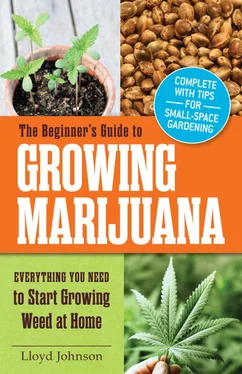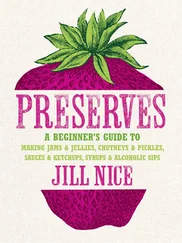The plants’ water intake should be monitored daily, especially when they get bigger and use more water and have less room in their containers. If soil in the container is pulling away from the edge of the pot, it is time to water. The best time is when the soil is just starting to pull; otherwise, you will waste a lot of water that runs down between the pot and the root ball, and the plant might not be getting much at all.
Cannabis plants that are stressed for water will signal to you by leaf droop and a wilty look. They can bounce back very quickly, but stressing the plant over and over will take its toll. Do not let the plants dry out and beg for water; ideally, water deeply once a week.
Identifying the Peak Harvest Moment
At the end of the twelfth week in the indoor cycle, the plants should be ready, or nearly ready, for harvest. You must monitor trichomes at least daily to determine when to harvest. Generally, indoor growers, like outdoor growers, take their plants when the trichomes are just starting to turn amber.
Indoor growers have an advantage here by being able to control the growing environment. If you are working with a late-maturing strain or feel the flowering plants need another week of finish, you can choose to do so without worrying about the weather and potential crop loss to molds. A ripe cannabis flower will generally have both white and brown pistils showing from the third set as the trichomes are starting to turn from clear to amber. This is the ideal time to harvest.
Protecting Against Natural Pests
There are many common cannabis predators. You should be on the lookout for signs of infestation and be prepared to tackle the problem.
Spider Mite
Almost nothing is more destructive to an indoor grow than a spider mite infestation; the crop and grower are both in for a bad time. If you see any indication of spider mites in your grow room, you must act immediately to protect your plants. There is more info on the prevention and eradication of mites in Chapter 9, but you should know the basics here. Spider mites live on the underside of leaves and puncture the plant’s cells to feed. The first visible signs of infestation are light dots on the leaves. As the infestation advances, the leaves can take on a gray or bronze color. Then, the plant’s leaves turn yellow and drop off. Your plant is signaling in every way it can that it is under attack and needs help. Leaves, twigs, and flowers become covered with large amounts of webbing, and the plants appear very sickly and stunted. As your plant’s foliage declines in food value, female spider mites hitchhike onwards to other plants, and the cycle continues.
Whitefly
Whitefly are quite small, approximately one-sixteenth of an inch long, and completely white. If you lightly shake the plant, they flutter around and then settle back. Whitefly suck on the juices in leaves, weakening plants and transferring disease from plant to plant.
French marigold ( T. patula ) is an annual that deters whiteflies, and it has roots that kill nonbeneficial nematodes. Marigolds in pots can be moved around the greenhouse or grow room. Make certain to get the specific variety T. patula , which is usually sold as French marigold.
Fungus Gnats
Fungus gnats can be problematic once they get a foothold in your grow room. They are spindly flies that look like tiny mosquitoes, with bodies about one-eighth of an inch long. The larvae live in the soil and cause the damage to plants, not the adults. Larvae are translucent gray to white, about one-quarter inch long, worm-like with no legs, and with shiny black heads. They can infest a crop from soil or algae under benches, from contaminated potting soil, or by adults flying short distances into the production area.
Larvae feed on decaying matter and on healthy and diseased roots in the soil medium; they are particularly damaging to seedlings or small clones. Fungus gnat problems result from overwet conditions and diseased roots; the alert grower will make haste to amend poor cultural conditions. Soils should be stored dry, and pots and production areas must be well drained. Fungus gnats need soil fungi, algae under benches, or a damp mossy place to get established.
Sometimes naturally occurring parasites can regulate fungus gnat populations, especially when broad-spectrum pesticides are not used in the production area. Fungus gnat parasites are much smaller than fungus gnats and look like fragile tiny wasps.
Adult fungus gnats are attracted to yellow sticky traps. Some growers also report that using diatomaceous earth (DE) on the topsoil of the pots is effective in killing fungus gnat larvae.
Molds
Botrytis is the most commonly seen mold in an indoor grow. It requires high humidity conditions (50 percent or higher) and some type of initial food source before it invades a healthy plant. Any debris from old leaves or bruised, broken plant parts can be enough to provide a food base, and eventually the fungus will invade healthy plant tissue and you will lose some, if not all, of your harvest.
Botrytis can initially be mistaken for a dusting of trichomes, but once in full bloom it presents as gray, almost hairlike, spots on the cola or flower, continuing rapidly to slimy, dark gray goo.
Prevention is the best cure; sanitation and good air circulation are the best weapons you have to prevent major botrytis or other mold outbreaks. Remove dead leaves or damaged tissue from the plants and keep the indoor grow room extremely clean. Do not throw dead leaves to the base of your plants; you will be creating a food source for botrytis and other pests.
Protection from Human Pests
Absolutely the most important thing you can do to protect your cannabis from theft is to not talk about it. This can be difficult, especially if your crop is beautiful, bountiful, and delicious. It is human nature to want to take credit for or to brag a little about your successful crop. You may be tempted to show your gorgeous grow to a trusted friend. If he has no “need to know,” do not burden him with the responsibility of knowing about your crop.
Do not tell someone who asks where you got your wonderful cannabis. This can be someone you know well and trust implicitly, and may be trustworthy and would never mean harm to you, but again, there is human nature and the desire to talk. Bragging about knowing a really great grower is something that people sometimes do. They feel there is no harm in it because they are not giving your name.
The Impact of Law Enforcement
Another threat to consider is law enforcement—this depends on where you live and your legal status as a grower. In the right state, and the right counties within that state, law enforcement is not allowed to discriminate against licensed medical growers. It is sensible and right that a law-abiding citizen can call the police for help and get the same response as, for example, a cultivator of expensive bonsai who is being robbed would receive.
If you are illicitly growing indoors, instead of legally, your risk is greatly increased. The more people who know about your grow increases the chance that information about you will be traded to law enforcement by someone looking to improve his or her own legal situation. In other words, people will inform on others to reduce charges against themselves. Landlords
If you rent your home, remember that there is one person who does have a right to access your living (and growing) quarters: your landlord. A landlord must give advance notice of a visit, either for a normal look around or perhaps to make some needed repair, but the landlord does own the property and has a right to inspect things. How you handle this depends on your own ethics, but in general, if you plan to grow anything larger than a closet grow, it is better to seek out a cannabis-friendly landlord and ask permission. Trying to dismantle a full-sized grow room in seventy-two hours (a typical advance notice time frame in most states) is tricky at best, and of course raises the question of where to move it to.
Читать дальше












